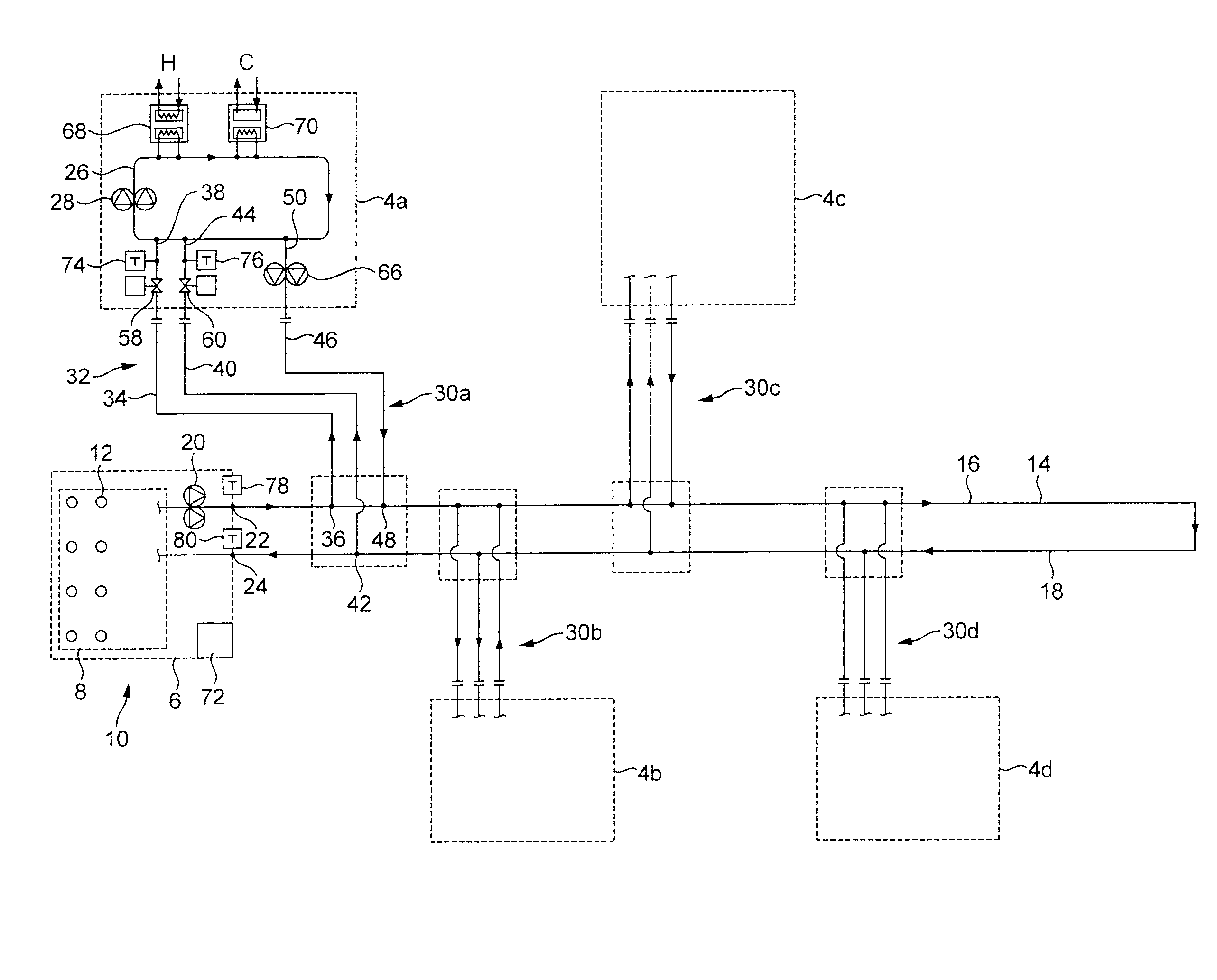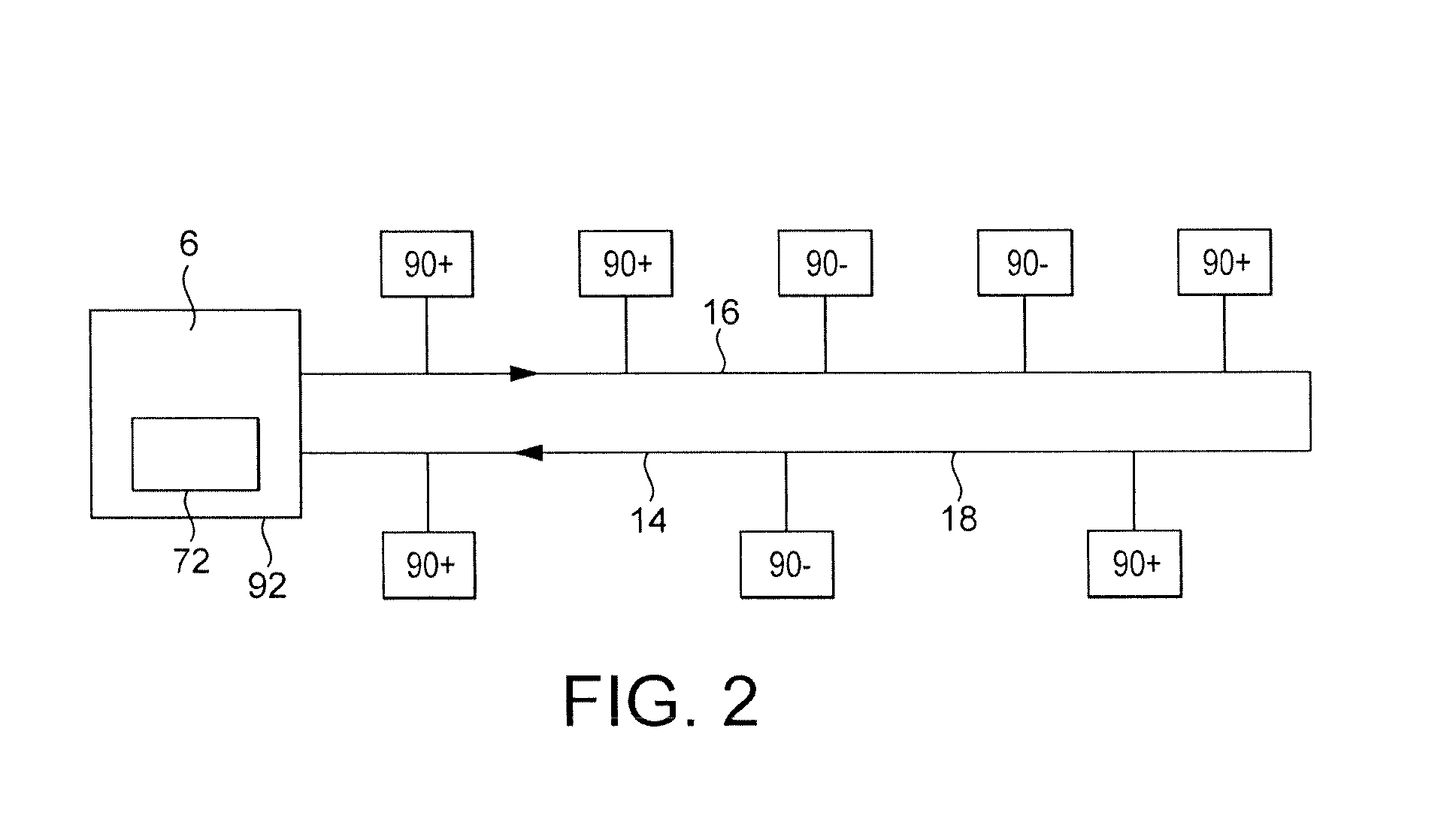Thermal energy network
a technology of thermal energy network and thermal energy, applied in the direction of combined combustion mitigation, lighting and heating apparatus, heating types, etc., can solve the problems of increasing capital costs, increasing running costs, and reducing thermal efficiency
- Summary
- Abstract
- Description
- Claims
- Application Information
AI Technical Summary
Benefits of technology
Problems solved by technology
Method used
Image
Examples
second embodiment
[0072]Referring to FIG. 3, there is shown a geothermal energy network 102 interconnecting a plurality of buildings 104a, 104b, 104c, 104d in accordance with the present invention.
first embodiment
[0073]This embodiment is modified as compared to the first embodiment by providing modified connections 30a, 30b, 30c, 30d to the primary circuit loop 14. The connections 30a, 30b, 30c, 30d each include four working fluid lines, two lines connecting the user circuit loop 26 to the upstream outflow line 16 and two lines connecting the user circuit loop 26 to the downstream return line 18.
[0074]In the illustrated embodiment, each connection 30a, 30b, 30c, 30d comprises four working fluid lines. A first working fluid line 134 has an inlet 136 connected to the upstream outflow line 16 and an outlet 138 connected to the user circuit loop 26. A second working fluid line 140 has an outlet 142 connected to the downstream return line 18 and an inlet 144 connected to the user circuit loop 26. A third working fluid line 146 has an inlet 148 connected to the downstream return line 18 and an outlet 150 connected to the user circuit loop 26. A fourth working fluid line 152 has an outlet 154 conne...
PUM
 Login to View More
Login to View More Abstract
Description
Claims
Application Information
 Login to View More
Login to View More - R&D
- Intellectual Property
- Life Sciences
- Materials
- Tech Scout
- Unparalleled Data Quality
- Higher Quality Content
- 60% Fewer Hallucinations
Browse by: Latest US Patents, China's latest patents, Technical Efficacy Thesaurus, Application Domain, Technology Topic, Popular Technical Reports.
© 2025 PatSnap. All rights reserved.Legal|Privacy policy|Modern Slavery Act Transparency Statement|Sitemap|About US| Contact US: help@patsnap.com



